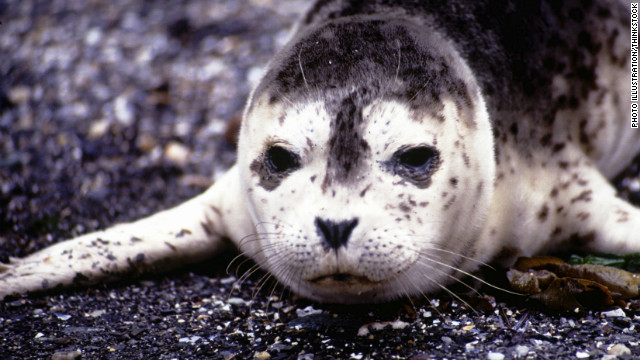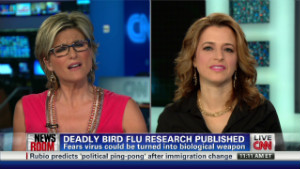August 1, 2012 by desertrose
Bird flu has jumped to baby seals, scientists discover
By the CNN Wire Staff

The virus developed the ability to attack mammalian respiratory tracts, scientists learned.
STORY HIGHLIGHTS
- A new strain of avian flu has mutated and is killing baby seals, scientists say
- More than 160 dead seals washed up on the New England coast last year
- The new virus could theoretically be a threat to human health, scientists say
The virus could theoretically pose a threat to human health, they said.
Harbor seals — most of them babies less than 6 months old — began appearing with severe pneumonia and skin lesions in September of last year, the researchers said.
Over the next few months, at least 162 dead seals were recovered along the coast from Maine to Massachusetts, they said.
Mutant bird flu would be airborne, scientists say
 2011: Concerns about bird flu strain
2011: Concerns about bird flu strain “When initial tests revealed an avian influenza virus, we asked the obvious question: How did this virus jump from birds to seals?” lead researcher Simon Anthony of Columbia University said.
The virus developed the ability to attack mammalian respiratory tracts, scientists learned.
It may also have developed enhanced virulence and transmission in mammals, they said, but they need to do more tests to be sure.
Avian flu has spread to humans before, most notably H1N1 and H5N1, so the new strain could pose a threat to public health, scientists warned.
“HIV/AIDS, SARS, West Nile, Nipah and influenza are all examples of emerging infectious diseases that originated in animals,” said W. Ian Lipkin, director of the Center for Infection and Immunity at Columbia University.
“Any outbreak of disease in domestic animals or wildlife, while an immediate threat to wildlife conservation, must also be considered potentially hazardous to humans,” he said.
The research is published in the journal mBio.
It was carried out by scientists from the Center for Infection & Immunity at Columbia University’s Mailman School of Public Health, the National Oceanic and Atmospheric Administration, New England Aquarium, the USGS National Wildlife Health Center, SeaWorld and EcoHealth Alliance.
CNN’s Miriam Falco contributed to this report.
Related articles
- New avian flu virus jumps from birds to mammals, kills New England’s baby seals (medicalxpress.com)
- An avian flu that jumps from birds to mammals is killing New England’s baby seals (terradaily.com)
- An avian flu that jumps from birds to mammals is killing New England’s baby seals (eurekalert.org)
- Bird Flu Strain Blamed in 162 Baby Seal Deaths (fox8.com)
- Next Scare: Seal Flu?: DNews Nuggets (news.discovery.com)
- New bird flu virus killing baby seals – study (nzherald.co.nz)
- US: New bird flu virus killing baby seals (crofsblogs.typepad.com)
- Bird flu blamed for deaths of New England seals: Can H3N8 strain spread to humans? (cbsnews.com)
- New Avian Flu Virus Jumps from Birds to Mammals, Kills New England’s Baby Seals (zen-haven.dk)

 Bird flu research published
Bird flu research published
No comments:
Post a Comment
Hello and thank you for visiting my blog. Please share your thoughts and leave a comment :)